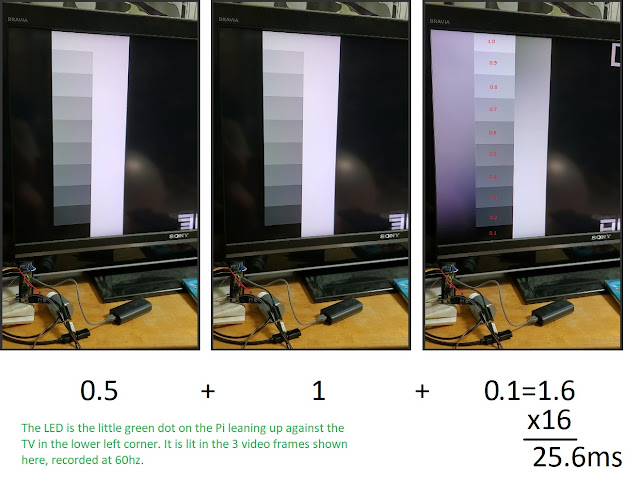piLagTesterPRO now supports Excel / any plot program that can read CSV files
One of the main features of the piLagTesterPRO is the real time visualization of the TV's response, plus the ability to export that data to disk for offline analysis and for making figures. Until now the offline analysis had to be performed in Matlab/Octave. But now you can use Excel or any program that can import CSV files (pretty much any plotting program known to man). No more need to install Octave! Design any analysis or figure you want using your favorite spreadsheet!
Now, I'm not much for eXceL, and as you can see my copy is very old (2003!), so the quality of the figure I came up with it is not nearly as nice as what I can do in Octave. But if Octave is a non-starter for you this offers an alternative.
And of course you could use the same file with an online spreadsheet or plotting website too. Here's what I came up with in google sheets in about 30 seconds:
So the takeaway is this: now pretty much anybody can use the piLagTesterPRO to make figures. The data format is very simple: just two columns, one for time and one for brightness, and it is saved in a plain text file of "comma separated values" (aka CSV) that any program can open. To convert from the standard MATLAB friendly files to CSV use the datr2csv command on the pi, as in datr2csv *.datr.
PS: the MATLAB/octave option is still fully supported for those who like the slick figures it makes. And the Matlab code I've written can be used without any programming, you just choose the file you want to plot using a GUI and it generates a reasonable figure from it automatically. Here's an old example from another dataset:
The difficulty arises if you want to edit that figure, which is pretty easy to do in the MATLAB GUI (costs$$$) but can't be done other than simple zooming and stretching in Octave (costs $0/your time).





Comments